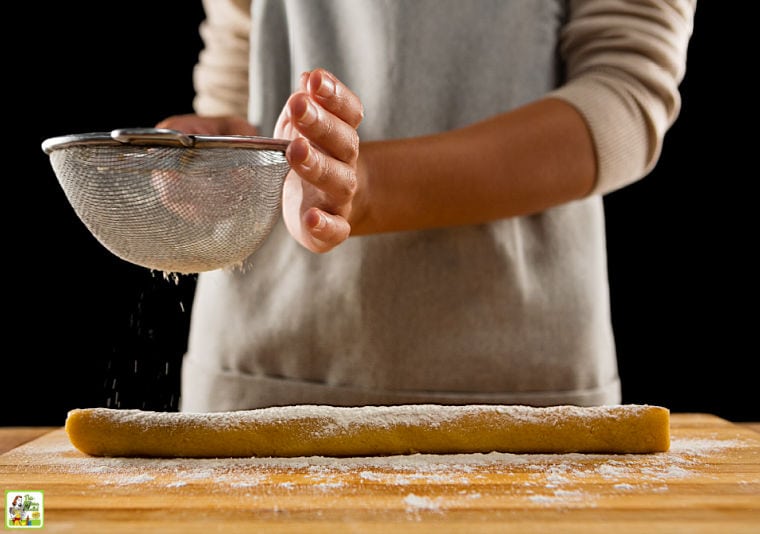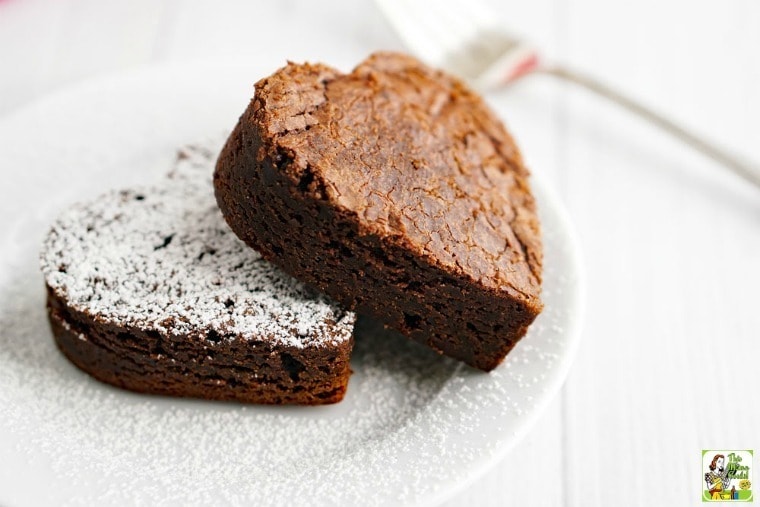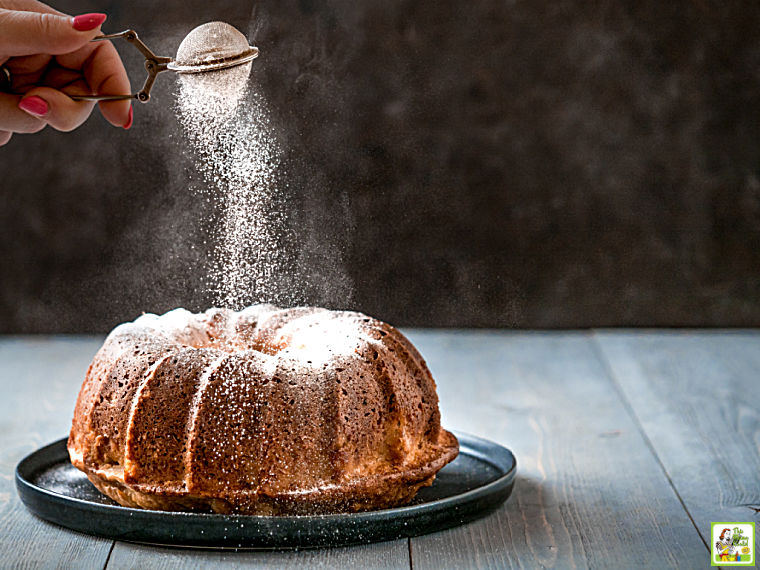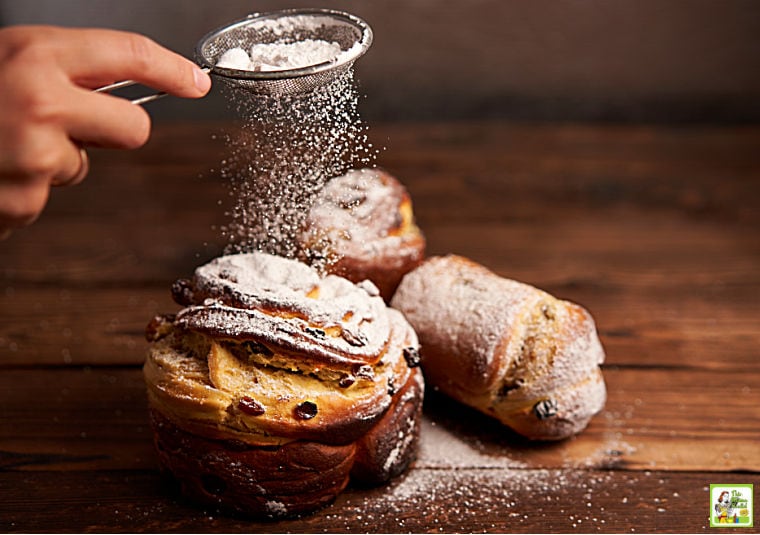![]()
Last Updated on October 5, 2021 by Anne-Marie
If you're doing a pantry clean out, maybe you're wondering does powdered sugar go bad? Here are some helpful tips!

Why you need this guide
We all have found a half-used bag of confectioner's sugar from an old baking project. Should you keep it or toss it out? How do you know it's still good?
This is a guide to learning if powdered sugar is still good. And how to store powdered sugar to keep it from going bad in the future.
What is powdered sugar?
Powdered sugar is also called confectioners sugar or icing sugar. It's a form of fine sugar produced by blending granulated sugar into a powdered form.
It also has a bit of anti-caking agent, like cornstarch, which keeps it from clumping.
Its baking purpose is to make powdered sugar frosting and decorating cakes and other baked goodies.
In commercial baking, there are different versions of fine, best quality sugar. They're graded depending on how fine the sugar is ground. XXX, XXXX, and 10X sugar are three of the most common types available.
What is the shelf life of sugar?
Unless you're making lots of cupcake recipes for the kiddos, most of us use powdered sugar only during special occasions like making easy fudge recipes. I like using it my No Bake Oreo Cheesecake or for dusting pancakes and gluten free brownies.
It's usually around the holidays that we wonder if that ancient bag of powdered sugar is still OK to use after this long time.
It may have an expiration date on the package. But I wouldn't worry about it. Luckily, powdered sugar doesn't really go bad if stored properly.
How to store sugar to extend its shelf life
You should store confectioner's sugar just like you store brown sugar or white sugar. No not on the kitchen table in little bowls or shakers. (If that's you, you have a serious sweet tooth!)
The worst thing you can do is keep any bag of sugar open, unsecured, near extreme heat. Instead, it’s a good idea to keep all types of sugars in the unopened package in a cool place out of direct sunlight.
The best way is to keep it in a dry place at room temperature in a kitchen pantry or cabinet away from the hot stove. I keep my coconut sugar, raw sugar, regular flour, whole wheat flour, etc. in a plastic bucket with a lid on a pantry shelf.
Once you open the original package, make sure to seal it up tightly to keep out moisture and bugs. Use a rubber band or bag clip with a plastic cap pour spout to make the sugar lasts the longest.
How to tell if powdered sugar is bad
Powdered sugar may go bad if moisture gets into the package. This causes clumping, which you shouldn't worry about too much.
However, if there are mold or bugs, throw out all the sugar. This is the only spoilage of powdered sugar you should worry about.
In fact, if you find pantry pests in your sugar, you should probably check the rest the items in your cupboards - flour, rice, cereal, breads, etc. You may have an infestation!
How do you fix hardened powdered sugar?
If the confectioners' sugar has hardened but is still OK (not moldy or having strong odors) you can fix it.
First, place the hard lumps in a large mixing bowl.
Second, use a large spoon to break and mash it into smaller pieces.
Third, run the smaller pieces and any powder from the bowl through a fine-mesh sieve or flour sifter into another bowl.
Why does my powdered sugar taste chalky?
Some people notice the corn starch anti-clumping agent that's been added to the sugar as an anti-caking agent. Some brands have more or less corn starch.
If it's noticeable to you, you could add some homemade powdered sugar to balance out the flavor.
How to make powdered sugar using regular sugar
You can make powdered sugar at home by grinding regular (granulated) white sugar in a coffee grinder, high-speed blender, or food processor. You can also use a mortar and pestle.
Grind the sugar until it's turned into a fine powder.
If you have leftover homemade powdered sugar, store it in an airtight container. This should have an indefinite shelf life as well.
What substitutes can I use for powdered sugar?
There's good news if you're on keto or a low-carb diet and are looking for no-calorie substitutes. You might like products like:
- Swerve Confectioners’ Sweetener - no cornstarch (I've used this type of sugar substitute and love it!)
- Anthony's Confectioner's Sweetener - no cornstarch
- Erythritol Sweetener Powdered Confectioners - no corn starch
You can find these online or at your grocery store.
Use any of these as a direct substitute for powdered sugar in recipes. Store these in a dry area that's cool and away from the heat of the kitchen.
Again, like the real deal, keep these sugar substitutes in the original packaging. Once open, seal with a rubber band or clip.





